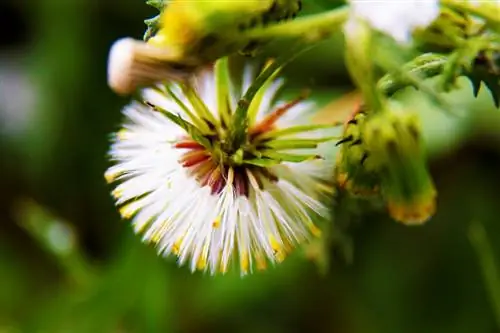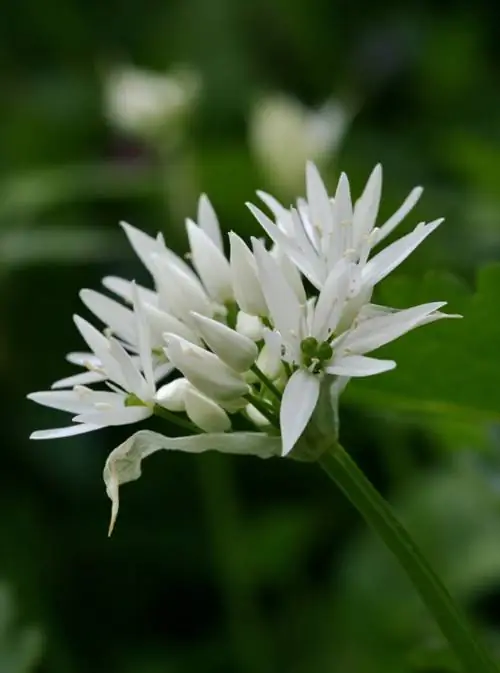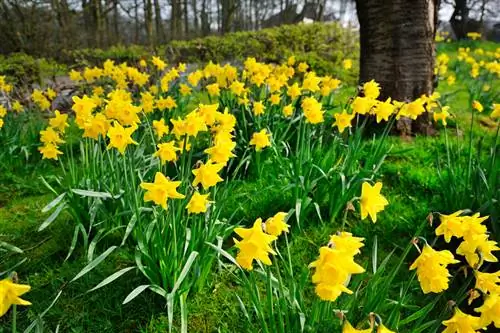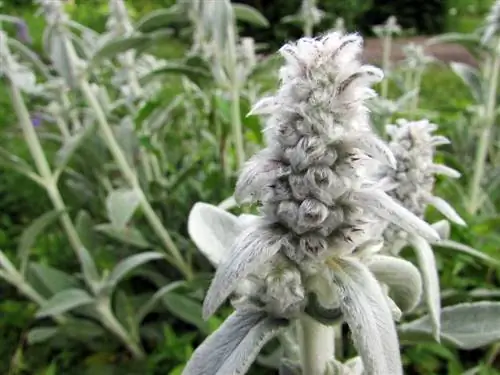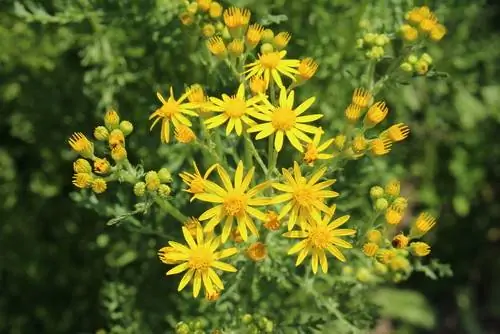- Author admin [email protected].
- Public 2023-12-16 16:46.
- Last modified 2025-01-23 11:20.
Depending on the author and systematics, around 1000 or more different species of ragwort are known worldwide, all of which are highly poisonous. An estimated 30 species occur wild in Europe, although some are neophytes. We will introduce you to some of the best-known old herbs in this article.

Which ragwort species are most common in Europe?
There are around 1,000 different ragwort species worldwide, of which around 30 are found in Europe. The most common include narrow-leaved, alpine, Jacob's, water, common, fuchsia, forest and sticky ragwort. All are highly poisonous and have showy yellow flowers.
Similarities and identifying features
What all old herbs have in common is that they are often very pretty to look at on the outside and can cover large areas with a dense carpet of flowers. Nevertheless, the plants are highly poisonous for both humans and animals. All crags have showy, bright yellow flowers that can often be seen throughout the summer. The plants are usually annual or biennial and grow herbaceously. They belong to the composite family and are difficult to control.
Common European Ragwort Species
In the table below you will find an overview of the most common ragwort species found in Europe, some of which are no longer considered botanically among the ragworts (Senecio). These include, for example, the water ragwort (today Jacobaea aquatica) or the alpine ragwort (today Jacobaea alpina). These plants still appear in the overview because they are very similar to Senecio in terms of appearance and properties (especially in terms of toxicity!).
| ragwort | Latin name | Occurrences | Growth habit | Growth height | Leaves | Flowering time |
|---|---|---|---|---|---|---|
| Narrow-leaved ragwort | Senecio inaequidens | on motorways, along railway lines, on construction sites and brownfield sites, on roadsides | herbaceous | 30 to 60 cm | narrow lanceolate, sharply toothed | June to November |
| Alpine ragwort | Senecio alpinus | Alpine region | herbaceous | 30 to 100 cm | wide, undivided, heart-shaped | July to September |
| Jacobs Ragwort | Senecio jacobaea | Central Europe | herbaceous | 30 to 100 cm | Leaf rosette with leaves about 20 cm long, pinnate | June to October |
| Water Ragwort | Senecio aquaticus | Western and Central Europe | herbaceous | 15 and 80 cm | narrow linear-lanceolate, pinnate | June to October |
| Common ragwort | Senecio vulgaris | Eurasia | herbaceous | 10 to 30 cm | little hairy, pinnately split or pinnate | March to November |
| Fox's ragwort | Senecio ovatus | Central Europe | herbaceous | 60 to 180 cm | petiolate, undivided, oblong-lanceolate | July to September |
| Forest Ragwort | Senecio sylvaticus | Central Europe | herbaceous | 15 to 50 cm | pinnate, toothed | July to September. |
| Sticky ragwort | Senecio viscosus | Eurasia | herbaceous | 20 to 40 cm | alternate, elongated, sticky | July to September |
Tip
In the past, common or common groundsel was used in folk medicine because of its hemostatic properties. Due to the plant's toxicity, it is not recommended today.

